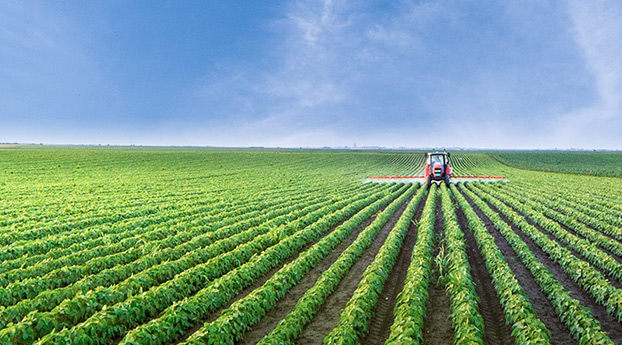The outer Qinhuai River will cut off a number of black and smelly river outfalls to reduce pollution
Release time:2017-01-06 Views:283
Sewage outlets along the line up to more than 1,000 domestic wastewater accounts for nearly 80 percent
The outer Qinhuai River will cut off a number of black and smelly river outfalls to reduce pollution
For the first time in winter, Nanjing has fully opened the Sancha River estuary lock. Reporters learned yesterday from the water department, this move is to let the outer Qinhuai River along the sewage outfall automatic "appearance", to part of the black smelly river pollution, from the root to reduce the external Qinhuai River pollution.
More than 80 black and smelly waterways connect the outer Qinhuai River
Sancha River estuary sluice is an important water conservancy project in Nanjing to control and regulate the outer Qinhuai River. It is usually opened when the Yangtze River discharge or the Qinhuai River basin needs to increase the discharge.
It is known that after the Qinhuai River is divided into two branches in Dongshan of Jiangning, the northern branch is the outer Qinhuai River. Environmental protection department monitoring shows that its water quality belongs to four categories, basically meet the landscape water standards.
The Sancha River Estuary Lock, built in 2005, is mainly responsible for regulating the river water level and maintaining the passage of the waterway in non-flood season, ensuring that the water level of the outer Qinhuai River is maintained at 6-6.5 meters all year round, which is conducive to the navigation and landscape needs of pleasure boats and gaily-painted boats. During the flood season, when the water level of the Yangtze River exceeds 6.5 meters each year, the floodgates are opened to connect the Outer Qinhuai River with the Yangtze River and become a floodway to ensure that the water discharged from the pumping station can pass through the Outer Qinhuai River into the Yangtze River in time when the main urban area is hit by heavy rainfall. In addition, the summer opening of the gate also helps to the urban river water source.
However, more than 80 of the 109 black and smelly river channels under control in Nanjing this year are connected to the outer Qinhuai River. According to conservative estimates, there are more than 1,000 sewage outlets along the banks of the outer Qinhuai River, which is far more difficult to control than the 36 black and smelly river channels last year.
Due to historical reasons, many sewage outfalls have been hidden in the water after being "masked" by cement slope protection, which brings difficulty to the investigation of the outfall.
The main pollution source is residential sewage
The investigation shows that the ecological foundation of the outer Qinhuai River is fragile, the self-purification ability of the water body is weakened, and the good water quality should be maintained by artificial water changing, washing and silting. Therefore, the pollution of the Qinhuai River must be reduced from the root, and the discharge must be intercepted.
According to previous investigations by environmental protection authorities, the water pollution of the outer Qinhuai River mainly comes from domestic sewage and industrial wastewater, including agricultural pollution, traffic pollution and construction pollution. When it comes to river pollution, the first thing that comes to mind is industrial pollution, but the biggest source of pollution in the outer Qinhuai River is actually residential pollution. In the sampling test, industrial, catering and residential waste water accounted for 7.2%, 14.1% and 78.7% of the total waste water, respectively. In the main city after the relocation of chemical enterprises, residential sewage has been ten times the industrial waste water. Analysis shows that many real estate along the river in the construction of domestic sewage outfall in the river, resulting in difficulty to find.
Water experts told reporters that in order to speed up the implementation of the outer Qinhuai River sewage pollution, further improve the urban river landscape water quality, the opening of the Sancha River estuary sluice will continue until the 10th of this month, and adjust the time according to the actual situation, in order to ensure safety, reduce the water level of the outer Qinhuai River will be slow.
Clean water quality in the future to undertake the "heavy responsibility" of water diversion
In fact, the water quality of the tributaries is black and smelly, and the water quality of the outer Qinhuai River will also be affected. The water quality of the outer Qinhuai River can be improved only if the tributaries meet the water quality standards.
According to the just-completed "Nanjing Main City Water System Connectivity and Ecological water replenishment Planning Scheme", on the basis of existing water replenishment, Nanjing plans to improve the communication between the Yangtze River, Jinchuan River, Qinhuai River and Qinhuai New River, the five "water sources" and the black and smelly river, so as to form an efficient water replenishment system. As the outer Qinhuai River is also an important water diversion channel for ecological water replenishment in Nanjing. Engineering remediation is only to eliminate the black river foundation, water diversion is the "important".
According to the plan, including the outer Qinhuai River, the river diversion project will be carried out this year in the main city, Hexi and southern New City, and finally make the north, south, east, Hexi and south of the city five large rivers have "running water". Meanwhile, an "intelligent water diversion" project will be completed by 2019, enabling remote monitoring, online analysis of water quality, and automatic scheduling and control of water flow.
Source: Jinling Evening News, January 16, 2017

















